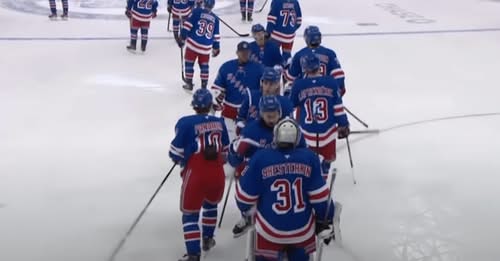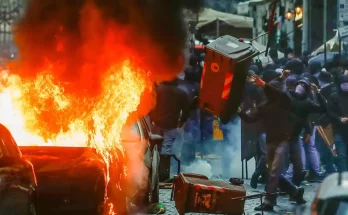**A New Era for the Rangers: Rebuilding with Familiar Faces and Fresh Energy**
While a good deal of the Rangers’ core remains intact, there is a breath of new life surrounding the upcoming season. After a disappointing 2024–25 campaign that fell short of expectations, the organization has turned the page, ushering in a new chapter under head coach Mike Sullivan. Known for his ability to maximize talent and instill a winning culture, Sullivan’s arrival signals a shift in philosophy—one that blends the experience of established stars with the enthusiasm of emerging young players. As the Rangers look to reload rather than rebuild, the pieces are in place for a potential resurgence, provided the team can find the right balance between continuity and change.
The Rangers’ core remains one of the most talented in the league, led by Artemi Panarin, Mika Zibanejad, and Adam Fox. Panarin, coming off another elite offensive season, continues to be the engine that drives New York’s attack. His creativity and playmaking ability make him one of the most dangerous forwards in hockey, and under Sullivan’s system—which emphasizes speed and puck possession—Panarin could thrive even further. Zibanejad, the team’s No. 1 center, provides a blend of scoring, two-way responsibility, and leadership, while Fox remains the backbone of the defense, a Norris Trophy-caliber defenseman who dictates play from the blue line.
Yet, despite the star power, last season exposed some glaring weaknesses. The Rangers struggled with secondary scoring, defensive depth, and consistency in high-pressure situations. Too often, the team relied on its top players to carry the load, and when opponents shut them down, the supporting cast failed to step up. This is where Sullivan’s influence will be critical. His track record with the Pittsburgh Penguins demonstrated his ability to get the most out of role players, turning depth signings into key contributors. If he can unlock similar potential in players like Kaapo Kakko, Alexis Lafrenière, and Filip Chytil, the Rangers’ offense could become far more dynamic.
Speaking of Kakko and Lafrenière, this season feels like a make-or-break moment for the former high draft picks. Both have shown flashes of brilliance but have yet to fully establish themselves as consistent top-six forwards. Under previous coaching regimes, their development seemed uneven, with fluctuating ice time and roles. Sullivan, however, has a reputation for nurturing young talent and putting them in positions to succeed. If he can instill confidence in Kakko and Lafrenière—whether through increased responsibility or more structured offensive systems—this could be the year they finally break out.
Another intriguing storyline is the influx of new faces brought in to address last season’s shortcomings. General Manager Chris Drury made calculated moves in the offseason, targeting players who fit Sullivan’s up-tempo, aggressive style. The addition of a versatile forward like Chandler Stephenson brings speed and defensive awareness to the middle six, while a veteran defenseman such as Brett Pesce (acquired via trade) shores up the right side of the blue line. These aren’t flashy, headline-grabbing moves, but they address specific needs—something the Rangers have occasionally neglected in favor of big-name acquisitions.
Perhaps the most exciting change, however, is the injection of youth into the lineup. Prospects like Brennan Othmann and Gabe Perreault are knocking on the door, and Sullivan’s willingness to trust young players could lead to them earning significant roles. Othmann, in particular, brings a blend of skill and grit that could make him an instant fan favorite, while Perreault’s hockey IQ and playmaking ability make him a potential dark horse for the Calder Trophy if he cracks the roster. The Rangers haven’t always been quick to integrate prospects, but with Sullivan at the helm, there’s a sense that the organization is ready to embrace a more youth-driven approach.
Of course, no discussion about the Rangers’ outlook would be complete without addressing the goaltending situation. Igor Shesterkin remains one of the best netminders in the world, but his workload has been a concern in recent years. The team’s defensive lapses often forced him to stand on his head, and while he’s capable of stealing games, even the best goalies need support. If the Rangers can tighten up defensively under Sullivan—limiting high-danger chances and improving their penalty kill—Shesterkin’s numbers should see a noticeable uptick. A more structured system in front of him could be the difference between a good season and a Vezina-caliber one.
The biggest question mark, though, is how quickly Sullivan can implement his system and get the entire roster to buy in. Coaching changes don’t always yield immediate results, and there could be growing pains as players adjust to new expectations. Sullivan’s success in Pittsburgh was built on accountability and adaptability—traits that the Rangers have occasionally lacked in recent years. If he can establish a clear identity early, this team has the talent to compete with the best in the Metropolitan Division.
Ultimately, the 2024–25 season was a wake-up call for the Rangers. They learned that relying solely on star power isn’t enough in today’s NHL—depth, structure, and cohesion matter just as much. With Sullivan now steering the ship, the Rangers have a chance to redefine themselves. The core is still in its prime, the young players are hungry for bigger roles, and the new additions fill critical gaps. If everything clicks, this could be the start of something special. If not, it may force the organization to ask tougher questions about the future.
One thing is certain: there’s a renewed sense of optimism around the Rangers. The pieces are there. Now, it’s up to Sullivan and his players to put them together.



